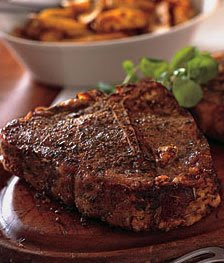Mad scientists cure mad cows: gene-ious
Mad cow disease(MCD) is a neurodegenerative disease that affects bovines. If infected meat is consumed it can be passed onto humans in the form of Cruetzfeldt-Jakob Disease, which also affects the brain. It is fatal to both.
MCD is caused by the misfolding of a normal cellular protein (prpc), into an infectious protein, a prion.
Due to the fact that everyone (almost) loves a nice steak, MCD in cows is the main problem. Richt et al have used genetics to disrupt the alleles of prpc, producing 12 cloned calves that are prpc deficient. The cows were proved to be immune to MCD after prions were injected into the brain tissue of two of the cows with no effect. The remaining cows were injected with MCD with no effect aswell, but as MCD can lie dormant for several years so, time will tell if they are truly immune.
‘At over 20 months of age they [the cows] are clinically, physiologically, histopathologically, immunologically and reproductively normal’ (Richt et al, 2007).
Aside from reducing/eliminating the occurrence of MCD, these cattle are thought to be beneficial for future drug and prion research. They may also produce favourable, prion free products such as the steak mentioned earlier.
So, no mad cows, no mad people, what’s the problem? Certain issues have been raised by the experiment. Will human consumption of the cows cause side effects? Will reproduction with normal cows cause problems? Is it moral to ‘play god’ by changing and controlling another species mainly for our own benefit?
References:
Primary:
Richt JA, Kasinathan P, Hamir AN, Castilla J, Sathiyaseelan T, Vargas F, Sathiyaseelan J, Wu H, Matsushita H, Koster J, Kato S, Ishida I, Soto C, Robl JM & Kuroiwa Y, 2007, Production of cattle lacking prion protein, Nature Biotechnolgy, vol 25, pp 132-138
Secondary:
Paddock C, 2007, ‘Could Genetic Engineering Eradicate Mad Cow Disease?’, 27th May 2007
Canadian Food Inspection Agency, 2007, ‘BSE Case Confirmed in British Columbia’, 30th May 2007


















 Recent dairy research reveals heifer mammary gland growth and subsequent lifetime lactation performance can be improved through feeding alternating ‘restricted’ and ‘adequate’
Recent dairy research reveals heifer mammary gland growth and subsequent lifetime lactation performance can be improved through feeding alternating ‘restricted’ and ‘adequate’ 
 Copper toxicosis
Copper toxicosis



